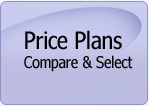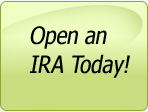|
"What is MyStockFund?"
MyStockFund is an affordable online investing service where you can purchase your
favorite stocks, exchange-traded funds (ETFs) and closed-end bond funds. Our easy
to use website makes it simple to build a diversified portfolio over time by giving
access to the securities markets in a dollar-based (fractional share) format. You
can invest as little as $10.00 (or as much as you want) in each security on a weekly
or monthly basis automatically every month with our AutoVest Schedule. Investing
in this manner allows you to take advantage of dollar-cost averaging and diversification
regardless of your budget or level of investing experience. One-time Plan Purchases
and Real-time market orders are available too!
(top of page)
"Why invest with MyStockFund
Securities Inc.?"
Automatic disciplined dollar-based fractional share investing is a growing trend.
While MyStockFund offers real-time market orders for convenience, their signature
service feature, “AutoVest,” goes to market on a weekly basis. AutoVest (a tool
that helps you build your portfolio over time with regular automatic investments
in your favorite securities) and One-time Plan Purchases are part of the process
of aggregating our members’ purchase orders to go to market as a group rather than
as individuals. In turn, MyStockFund is able to pass along the commission savings
to you. These prices are reflected in our Investing Plans and help you keep your
commission costs and transaction fees to a minimum.
(top of page)
"How much does MyStockFund
cost?"
We offer three standard Investing Plans so that you can pick the plan that suits
you best. See our Pricing and Investing section for available
plans. See other Fees & Services for other
related costs that might be associated with your account.
(top of page)
"What types of accounts are
available at MyStockFund?"
• Individual
• Joint
• Custodial
• Investment Club
• Corporate
• Partnership
• Trust
• IRA
We offer standard MyStockFund investing accounts at this time. In the future, we
will notify members when we add new account types.
(top of page)
"Who is eligible to open an
account?"
To open a MyStockFund account, you must be a U.S. citizen or resident alien with
a valid Social Security number. Also, you must have a permanent residence or home
of record within the United States. You must be (at least) the
age of majority for your state of residence. MyStockFund Securities cannot
currently accept applications from prospective members who do not meet these criteria.
(top of page)
"What information do I need
to open an account?"
All brokerage firms are required to collect certain information due to regulation
and IRS rules.
• Full legal name
• Date of Birth
• Citizenship
• Employment Information
• Residence Address
• Phone number
• Email
Other information required to open a MyStockFund
account:
• Checking or Savings Account information
• Credit Card (optional for payment of fees)
(top of page)
"How do I fund my account?"
Your AutoVest Schedule is funded automatically through Cash Link (a service
feature that electronically links your savings or checking account directly to your
MyStockFund account) one day in advance of your purchase. You do not have to fund
your AutoVest Schedule separately. You may choose to deposit cash into your account
using our Instant Deposit or Recurring Deposit feature for future ancillary One-time
Plan Purchases or Real-time market buy orders. All unused cash is swept into an
insured interest bearing account and will not incur penalties for cash withdrawals.
(top of page)
"How do I get started?"
Fill out the online application and you may set up your AutoVest Schedule today.
Your account will begin purchasing the designated securities in your AutoVest schedule
as soon as your Cash Link becomes active. The Cash Link approval and activation
process takes up to six business days.
(top of page)
"How do I place a buy order?"
You have four options in the way you may purchase securities with us. You may set
up recurring investments in your AutoVest Schedule with securities you would like
to dollar-cost average or buy into over time. You may place a real-time market orders,
stop loss and limit orders for $12.99 Monday through Friday (during regular market
hours) or you may place a One-time Plan Purchase order to be
executed during our weekly Plan Purchase cycle (every Thursday). Plan Purchases
are priced according to your respective Investing Plan and allow you to save on
commissions.
(top of page)
"How do I sell securities
in my portfolio?"
All sales are executed as real-time market orders and cost just $12.99 each. Sales
are not included with any Investing Plan.
(top of page)
"What is a Plan Purchase?"
A Plan Purchase is a scheduled purchase or buy order in any security placed through
the AutoVest Schedule (a tool that helps you build your portfolio over time with
regular automatic investments in your favorite securities) or the One-time Plan
purchase process executed during our weekly buy cycle. MyStockFund aggregates our
members’ fractional share or dollar- based orders and goes to market every Thursday.
By placing buy orders in this manner, MyStockFund is able to pass the savings off
to you. Plan Purchases are priced according to your respective Investing Plan. See
Pricing and Investing Plans for more information. Investing in this manner is a
great way to keep your commission costs down while making it simple to dollar-cost
average and diversify over time.
(top of page)
"Can I place a limit order?"
Yes, MystockFund Securities does allow members to enter limit orders.
(top of page)
"What tax and account information
is available to me with MyStockFund?"
You can access all statements, confirms and reports online to assist you in documenting
your taxable account activity, including income from dividends, interest and sell
proceeds. Cost basis of stocks that you sold during the year will be matched against
sell proceeds to help you calculate taxable gains or tax-deductible losses.
(top of page)
"How do I transfer securities
into MyStockFund?"
In order to transfer securities into MyStockFund from another firm, you my access
the forms on our website after you open your account in the Manage My Account section.
(top of page)
"Can I purchase stock that
is not on the current stock list?"
Yes. MyStockFund Securities offers market orders, for any security listed on an
exchange, that may be placed on the web site, for a fee of $12.99. You must purchase
whole shares. Securities can also be purchased through a Broker Assisted trade for
a fee of $25.00 for each security purchased. You must purchase whole shares. You
may contact one of our brokers Monday-Friday, 9:30am EST - 4:00pm EST (except holidays)
at 888-620-6050 and place a buy market order. You must have assets in your account
to cover the purchase and the fee for each security purchased.
(top of page)
"What is a market order?"
A market order is an order to buy or sell a stock immediately at the best available
current price. A real-time market order can be placed during regular market hours
from 9:30am to 4:00pm EST Monday through Friday. Orders can also be placed on the
web site after market hours. However, if an order is placed after market hours the
order will be stored by the web site, and will be placed as a market order shortly
after the market opening the next business day.
(top of page)
"Who is COR and what role
do they play?"
COR Clearing Corp. (COR) provides securities clearing, execution and settlement
to broker-dealers, banks, money managers and other financial intermediaries across
the nation. It is a member of the New York Stock Exchange and other principal exchanges,
the Financial Industry Regulatory Authority, and the Securities Investor Protection
Corporation.
MyStockFund Securities, Inc. (MSFS) is a registered introducing broker/dealer who
works with retail members to initiate stock transactions. COR sends those orders
to the appropriate trading floor, thus helping MSFS fulfill orders. COR is responsible
for receiving money from investors' source accounts and crediting investors' MSFS
account. They then debit your account to cover the cost of investment and credit
each investor's MSFS account with the correct amount of full and fractional shares
purchased. Investors will receive statements, confirmations, proxies and other such
documents bearing both COR and MSFS logos.
(top of page)
"What is an Individual Retirement
Account (IRA)?"
IRAs were created to enable and encourage individuals to save for their retirement.
The main incentive for opening an IRA is that an IRA offer tax advantages over a
typical investment account. Most importantly, contributions to Traditional IRAs
are generally tax deductible in the current year and any taxes related to gains
on the investments are not paid until you withdraw money from the account. In most
cases you can begin withdrawing the money at age 59½ without paying a penalty. However,
there are some circumstances under which the money can be withdrawn earlier without
having to pay a penalty.
(top of page)
"What types of IRAs does
MyStockFund Offer?"
MyStockFund currently offers two different types IRAs. These include:
1) Traditional IRA
2) Roth IRA
See the FAQ; "How do the IRAs offered by MyStockFund differ?" for a comparison of
these two IRAs.
(top of page)
"What are the tax advantages
of an IRA?"
Traditional IRA – Under a Traditional IRA, contributions are deducted from your
income taxes in the year that you make the contribution. Taxes associated with any
gains or losses are deferred until you withdraw money from the account. There are
penalties for unqualified early withdrawals. Early withdrawals are distributions
that occur prior to age 59½.
Roth IRA – Contributions to a Roth IRA are treated on an after-tax basis, meaning
you don’t receive a tax deduction at the time you make the contribution. However,
if your distributions meet the IRS requirements, any gains on your investments are
tax-free. As with Traditional IRAs, there are penalties for unqualified early withdrawals,
which are typically withdrawals made prior to age 59½.
(top of page)
"How do the IRAs offered
by MyStockFund differ?"
The table provides a summary of the major differences between the IRAs offered by
MyStockFund and is not a comprehensive review of IRAs. This is an overview and your
specific situation may vary. MyStockFund recommends that you consult your tax professional
to determine which IRA is best for you.
|
|
Traditional IRA
|
Roth IRA
|
|
Contributions
|
Are made using after tax dollars and in most cases deducted when you file your income
taxes.
|
Are made using after tax dollars but ARE NOT deductible from your income taxes.
|
|
Contribution Limits
|
Generally the limit is $4,000 per year, or $5,000 per year if you will be over age
50 before the end of the year.
|
Same as for a Traditional IRA but can be limited depending on your income, filing
status, and other factors.
|
|
Age Limit(s)
|
More often than not, when you reach the age of 70½ you can no longer contribute
to a Traditional IRA. You can begin withdrawing the funds without penalty at age
59½ and mandatory withdrawals are required at age 70½.
|
You can open a Roth IRA at any age and you are not required to withdraw money at
a specific age.
|
|
Taxes on Gains
|
Taxes on any gains are paid when you withdraw the funds from your IRA.
|
Typically you do not pay taxes on distributions and gains if you are over the age
of 59½ and the contributions were made more than 5 years ago.
|
|
Early Withdrawal
|
In most cases, if you withdraw the funds prior to the age of 59½ you are required
to pay an Early Withdrawal penalty.
|
In most cases, if you withdraw the funds prior to the age of 59½ you are required
to pay an Early Withdrawal penalty.
|
|
Income Limits
|
You must have taxable income in order to contribute to a Traditional IRA and your
contribution(s) cannot exceed your taxable income for the given year. However, there
is no upper taxable income limit for Traditional IRAs.
|
Yes, income limits, along with your filing status, can limit the amount you can
contribute in a given year. Please see the IRS web site or your tax advisor for
your specific situation.
|
|
Withdrawals
|
Must begin withdrawing funds in the year after you reach the age of 70½.
|
You are not required to withdraw the funds at a given age.
|
(top of page)
"Who can open an IRA?"
Anyone who has taxable income in a given year can open an IRA. Contribution limits
vary based on the type of IRA (Traditional or Roth) and your income, filing status,
and age. All IRAs are individual accounts, meaning a husband and a wife cannot participate
in a single joint IRA. In the case of a married couple, both the husband and the
wife are required to open separate individual IRAs. Please note that there are certain
taxable income requirements for both spouses in order to participate on a deductible
basis.
(top of page)
"Can my Spouse open an IRA
with MyStockFund?"
If your spouse had taxable income he/she can open an IRA. Note however, that all
IRAs are individual accounts and therefore a husband and wife cannot open a single
joint IRA. In the case of a married couple, both the husband and the wife are required
to open separate individual IRAs. Keep in mind, that if a person is married and
opens an IRA, they can designate their spouse as the sole beneficiary.
(top of page)
"Why is it a good idea to
specify a beneficiary for my IRA?"
In the unfortunate event that you pass away while still having assets in your IRA,
you will want to make sure that the remaining assets are distributed according to
your wishes. The best way to do this is to designate the IRA beneficiaries. MyStockFund
allows you to assign up to 6 primary beneficiaries. We also allow you to specify
the percentage of the assets that are assigned to each beneficiary.
Married IRA Holders: If you are married and open an IRA, MyStockFund automatically
designates your spouse as your beneficiary and assigns 100% of the assets to him/her.
However, once you complete the registration process, you can log into your account
and edit your beneficiaries. If you elect to reduce you spouse’s percentage to something
less than 100%, you will need to print a Spousal Consent Form, have your spouse
read and execute the form, and send it to us.
(top of page)
"How much does MyStockFund
charge for an IRA?"
MyStockFund has created price plans that are intended to meet the needs of both
active and buy-and-hold investors. The price plans include an annual fee that can
be charge to your credit card, deducted from your bank account, or can be paid from
cash in you IRA. All transaction fees are charged directly to your account. We have
purposely stay away from charging monthly fees since these fees would be counted
toward you annual contribution limits.
Please click here for detailed descriptions of the MyStockFund price
plans.
(top of page)
"What is an IRA Custodian?"
The administration of all IRAs is handled by an IRA Custodian. The Custodian is
responsible for administering the IRA in accordance with Internal Revenue Service
rules and regulations. MyStockFund, and it’s clearing firm COR Clearing, have
partnered with TruStar Retirement Services in Wilmington, Delaware. Therefore, if
you see TruStar Retirement Service’s name on selected correspondence, you’ll know
it’s related to your MyStockFund IRA.
(top of page)
"I participate in a retirement
plan at work, can I still open an IRA?"
In general you can open a Traditional IRA even if you are covered by an employer
sponsored retirement plan. However, the amount of your contributions that you can
deduct on your income tax return will likely be limited. However, any gains in your
IRA still enjoy a tax-deferred status.
As with Traditional IRAs, you can contribute to a Roth IRA even if you are covered
by an employer sponsored retirement plan. However, contributions are limited according
to your Adjusted Gross Income (AGI) in a given year and your tax filing status.
We recommend that you talk with your tax advisor to determine your level of contributions
(top of page)
"Can I transfer an IRA from
another Broker to MyStockFund?"
Transferring an IRA account to MyStockFund is simple. Just register to open an IRA
with MyStockFund online. Once you’ve completed the registration process, log into
your MyStockFund account and select the “Manage My Account, Account Management Forms”
from the main menu. Select the “Transfer Securities in from another Brokerage Firm”
form and follow the directions on the form. Once you complete the form, mail it
in along with a copy of the brokerage statement, and we’ll take care of the rest.
The process is very straightforward.
(top of page)
"How much can I contribute
to my IRA?"
In 2008, the annual contribution limit for a Traditional IRA is limited to the lesser
of your earned income for the year or $4,000 ($5,000 if you’ll be age 50 or older
by the end of the year).
Contribution limits for Roth IRAs are not as straight forward. Although the contribution
limits are the same as those for the Traditional IRA, the limits may be less based
on your annual income, filing status, and other factors.
In all cases, MyStockFund recommends that you consult your tax advisor regarding
the type of IRA account that is best for you and the associated contribution limits.
(top of page)
"What counts as a contribution
toward my annual limit?"
All deposits to your IRA account, with the exception of the annual fee, count as
contributions. You will find that MyStockFund displays your contributions to date
at multiple locations on the web site. This is intended to help you avoid exceeding
the contribution limit for your IRA. Ultimately, you are responsible for monitoring
and controlling your contributions so that they do not exceed the limit for your
specific IRA, income level, and filing status.
(top of page)
"Over what period of time
can I contribute money to my IRA?"
The plan year for IRAs is longer than the calendar year. The plan year for an IRA
runs from January of any one year through April 15th of the following year; a full
15½ months. That means that you can open and fund an IRA until April 15th 2008 and
have the contributions count toward your 2007 plan year. It’s important to note
that automatic deposits and investments to MyStockFund are credited to your account
based on the calendar year. Therefore, an automatic or one-time deposit on March
27, 2008 will be applied to your 2008 IRA plan year even if you have not reached
your maximum contribution for the 2007 plan year. If you want to specific the plan
year for your deposits, it is best to mail us a check, along with the deposit form
which allows you to specify which plan year you would like to have your contribution
apply to.
(top of page)
"What if I contribute more
than the annual limit to my IRA?"
It is critical that you monitor and control the funds that you contribute to your
MyStockFund IRA. In 2008, the annual contribution limit for a Traditional IRA is
limited to the lesser of your earned income for the year or $4,000 ($5,000 if you’ll
be age 50 or older by the end of the year).
Contribution limits for Roth IRAs are not as straight forward. Although the contribution
limits are the same as those for the Traditional IRA, the limits may be less based
on your annual income, filing status, and other factors.
There are various remedies and consequences for over contributing. It is best that
you call our Member Support group toll free at 888-620-6050 and we will work with
you to address any excess contributions.
NOTE: It is critical that you monitor and control your contributions against
the limits for your IRA. MyStockFund recommends that you consult your tax advisor
regarding the type of IRA account that is best for you and the associated contribution
limits.
(top of page)
"How are withdrawals from
an IRA processed?"
The process for withdrawing funds from you IRA is easy. Simply use the “Manage My
Account, Account Management Forms” from the main menu to access the IRA Distribution
Request form. Follow the directions to complete the form. After you complete and
sign the form, simple sent it to us and we will process the distribution. You can
specify if you would like to have the funds deposited to the bank account on file
with MyStockFund, or if you would prefer to have a check mailed to you. Please note
there is a $5 charge for check processing.
(top of page)
"What if I withdraw funds
early?"
In most cases you will be assessed a 10% early withdrawal penalty if you withdraw
funds from your IRA prior to age 59½. There are certain circumstances under which
the penalty does not apply. Examples include disabilities, un-reimbursed medical
expenses, first home purchases, etc.
(top of page)
|







